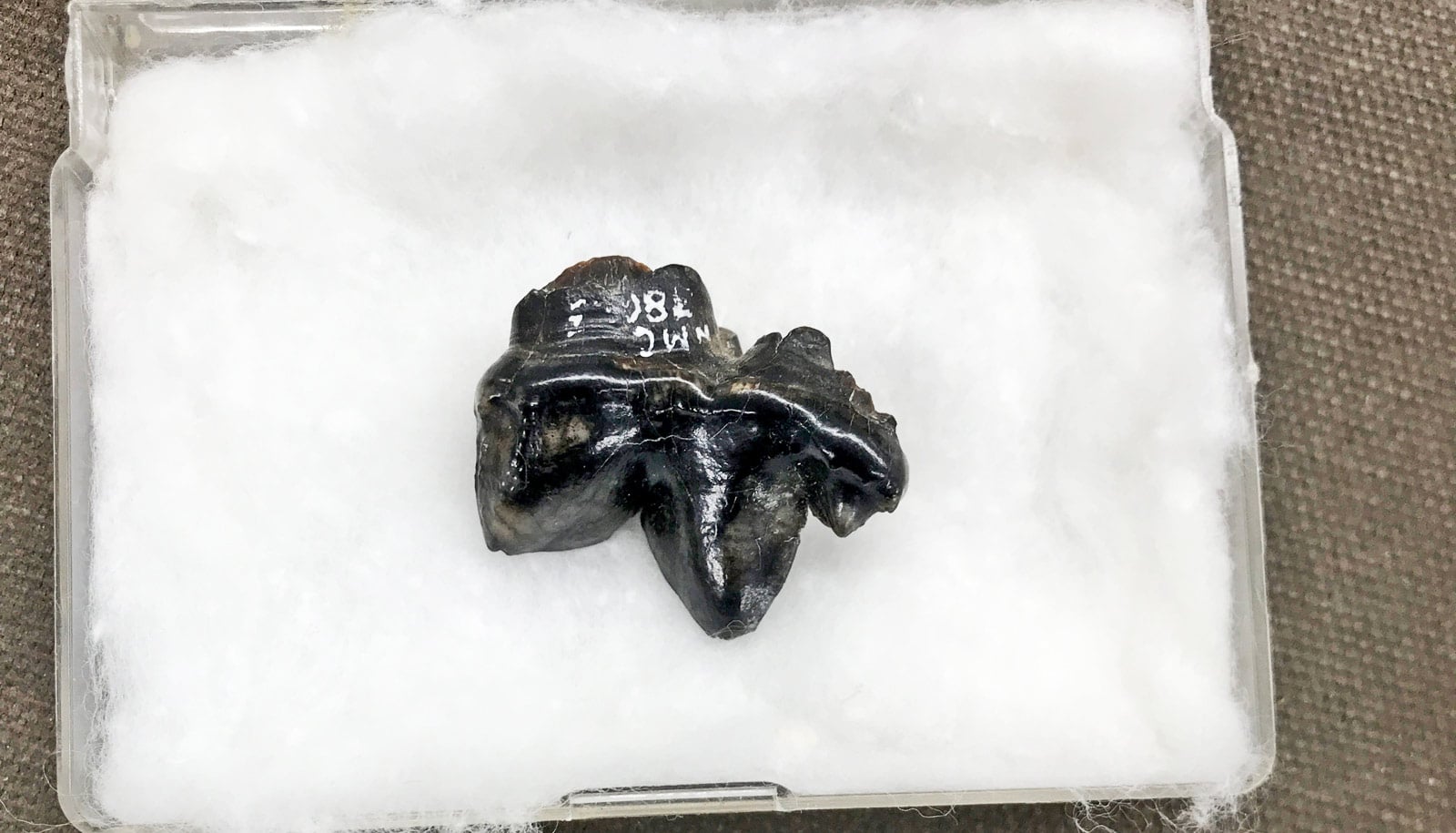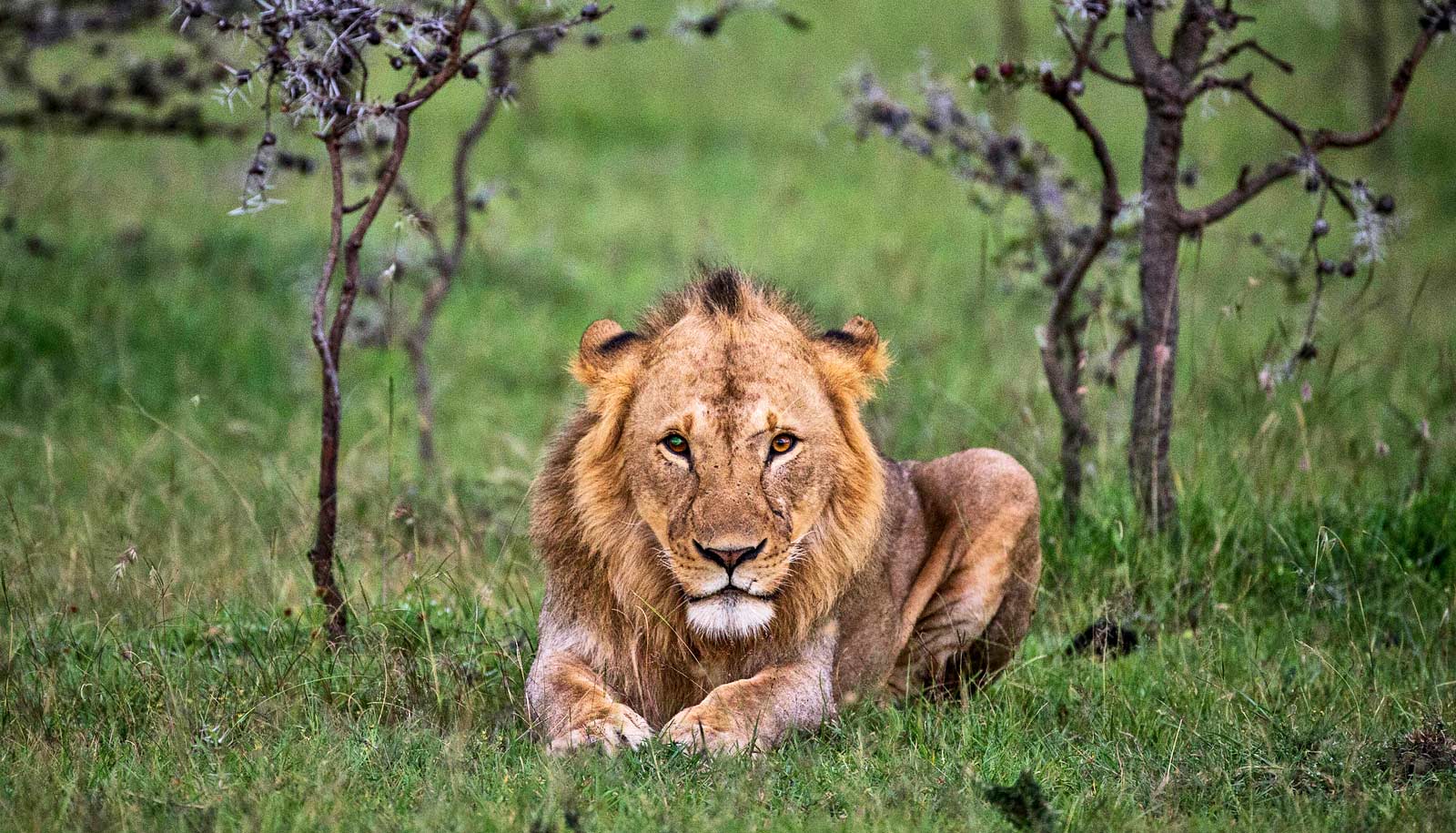Ancient hyenas inhabited the frigid Arctic during the last ice age, according to new research.
The research, which appears in the journal Open Quaternary, reports on the first known fossils of hyenas from the Arctic.
The study reveals that two ice age fossil teeth discovered in Yukon Territory in Canada belonged to the so-called “running hyena” Chasmaporthetes. Paleontologists tentatively thought the specimens, recovered in the 1970s, were from hyenas but the new paper is the first to confirm the fossils’ identity and report on them in detail, assigning them a genus based on comparisons to a global sample of hyena fossils.
“It is amazing to imagine hyenas thriving in the harsh conditions above the Arctic Circle during the ice age.”
The findings fill an important gap in scientists’ knowledge of how hyenas reached North America. Previously, Chasmaporthetes fossils had been found as far north as Mongolia in Asia and the southern United States in North America, with no sites in between.
“Fossils of this genus of hyenas had been found in Africa, Europe, and Asia, and also in the southern United States. But where and how did these animals get to North America? The teeth we studied, even though they were just two teeth, start to answer those questions,” says paleontologist Jack Tseng, the paper’s first author and an assistant professor of pathology and anatomical sciences in the Jacobs School of Medicine and Biomedical Sciences at the University at Buffalo.
Ancient hyenas likely entered North America via Beringia, an area, including Alaska and Yukon Territory, that connects Asia with North America during periods of low sea levels. From there, the animals made their way south all the way to Mexico, scientists say.
The newly described fossils are important in part because they provide the first proof of ancient hyenas living in Beringia.
“It is amazing to imagine hyenas thriving in the harsh conditions above the Arctic Circle during the ice age,” says study coauthor Grant Zazula, a Government of Yukon paleontologist. “Chasmaporthetes probably hunted herds of ice age caribou and horses or scavenged carcasses of mammoths on the vast steppe-tundra that stretched from Siberia to Yukon Territory.”
“Our previous understanding of where these far-ranging hyenas lived was based on fossil records in southern North America on one hand, and Asia, Europe, and Africa on the other,” Tseng says. “These rare records of hyenas in the Arctic fill in a massive gap in a location where we expected evidence of their crossing between continents, but had no proof until now.”

The fossil teeth are most likely between about 1.4 million and 850,000 years old, with ages more likely closer to the older figure, according to the researchers’ analysis. But the first hyenas crossed into North America long before that, as the earliest known hyena fossils on the continent date back about 5 million years, Tseng says.
The fossil teeth were collected in the 1970s during paleontological expeditions in the remote Old Crow River region in northern Yukon Territory. Richard “Dick” Harington, Gerry Fitzgerald, and Charlie Thomas discovered one tooth, and Brenda Beebe and William Irving the other.
The specimens—tucked away in the collections of the Canadian Museum of Nature in the Ottawa, Ontario area—are among 50,000 other fossils recovered from the area over the last century.
The identity of the fossil teeth remained an enigma until they captured Tseng’s attention, sparked by the re-discovery of decades-old notes by study coauthor Lars Werdelin, paleontologist in the Swedish Museum of Natural History.
Tseng drove to Ottawa from Buffalo in February 2019 to view the specimens. As an expert on the evolution and fossil record of hyenas, he was able to identify the teeth as belonging to the genus Chasmaporthetes.
Though there are only four living species of hyena today (three bone-crushing species, plus the ant-eating aardwolf), ancient hyenas had a diverse family history, with many dozens of species found in localities spanning the Northern Hemisphere.
Hyenas disappeared from North America before the first people arrived. Although the reasons for this extinction between 1 and 0.5 million years ago remain unclear, it is possible that the animals’ bone-crushing, scavenging niche was replaced by the impressive short-faced bear Arctodus simus, which lived across North America until the end of the ice age about 12,000 years ago.
Paleontological expeditions to the Old Crow region of northern Yukon Territory have a long history that goes back to the early 1900s and now occur annually as part of collaborative efforts between the Yukon Palaeontology Program and the Vuntut Gwitchin First Nation. More information on ice age fossils from Yukon Territory is available here.
Source: University at Buffalo

